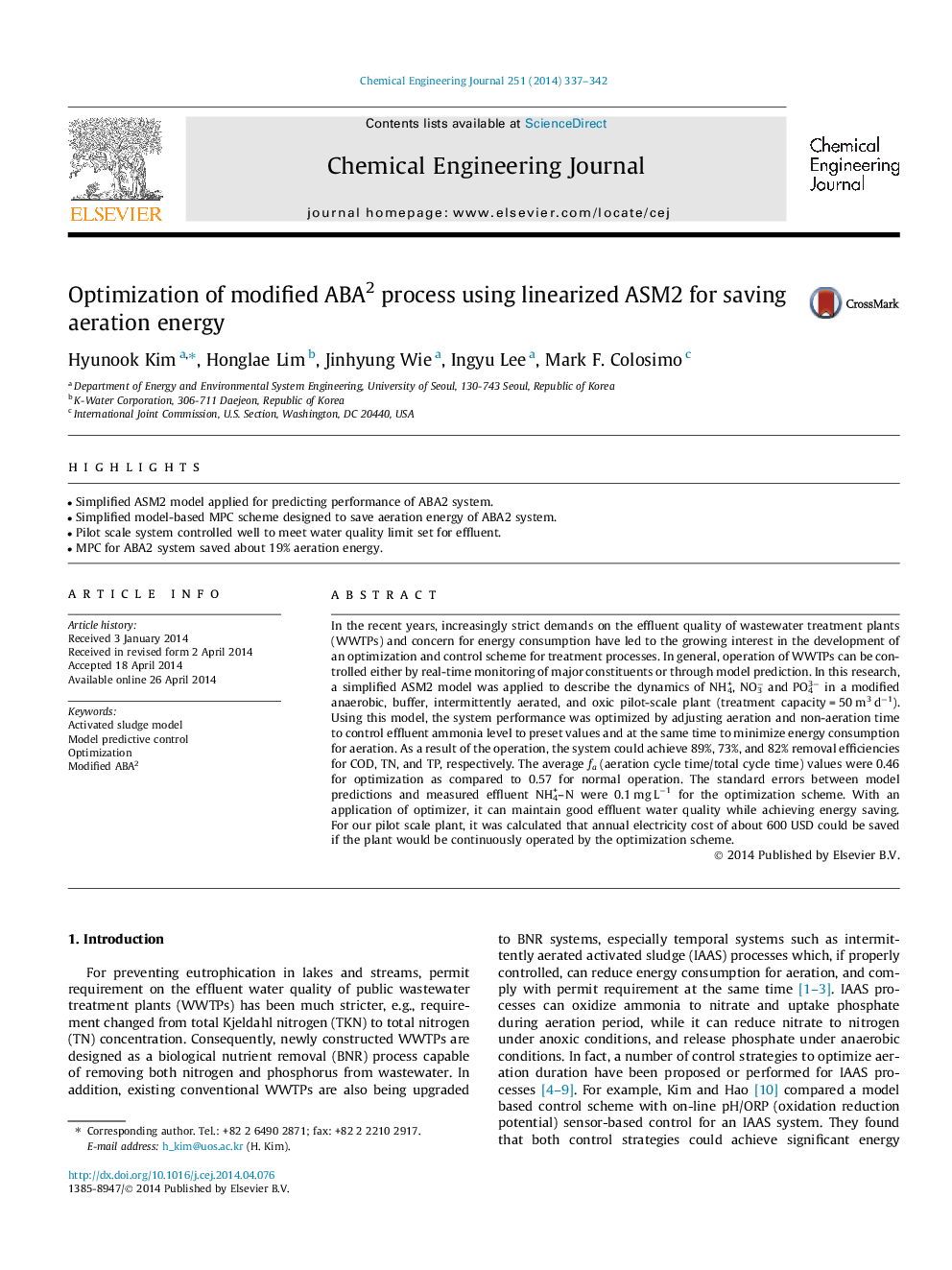| Article ID | Journal | Published Year | Pages | File Type |
|---|---|---|---|---|
| 6586494 | Chemical Engineering Journal | 2014 | 6 Pages |
Abstract
In the recent years, increasingly strict demands on the effluent quality of wastewater treatment plants (WWTPs) and concern for energy consumption have led to the growing interest in the development of an optimization and control scheme for treatment processes. In general, operation of WWTPs can be controlled either by real-time monitoring of major constituents or through model prediction. In this research, a simplified ASM2 model was applied to describe the dynamics of NH4+, NO3â and PO43â in a modified anaerobic, buffer, intermittently aerated, and oxic pilot-scale plant (treatment capacity = 50 m3 dâ1). Using this model, the system performance was optimized by adjusting aeration and non-aeration time to control effluent ammonia level to preset values and at the same time to minimize energy consumption for aeration. As a result of the operation, the system could achieve 89%, 73%, and 82% removal efficiencies for COD, TN, and TP, respectively. The average fa (aeration cycle time/total cycle time) values were 0.46 for optimization as compared to 0.57 for normal operation. The standard errors between model predictions and measured effluent NH4+-N were 0.1 mg Lâ1 for the optimization scheme. With an application of optimizer, it can maintain good effluent water quality while achieving energy saving. For our pilot scale plant, it was calculated that annual electricity cost of about 600 USD could be saved if the plant would be continuously operated by the optimization scheme.
Related Topics
Physical Sciences and Engineering
Chemical Engineering
Chemical Engineering (General)
Authors
Hyunook Kim, Honglae Lim, Jinhyung Wie, Ingyu Lee, Mark F. Colosimo,
